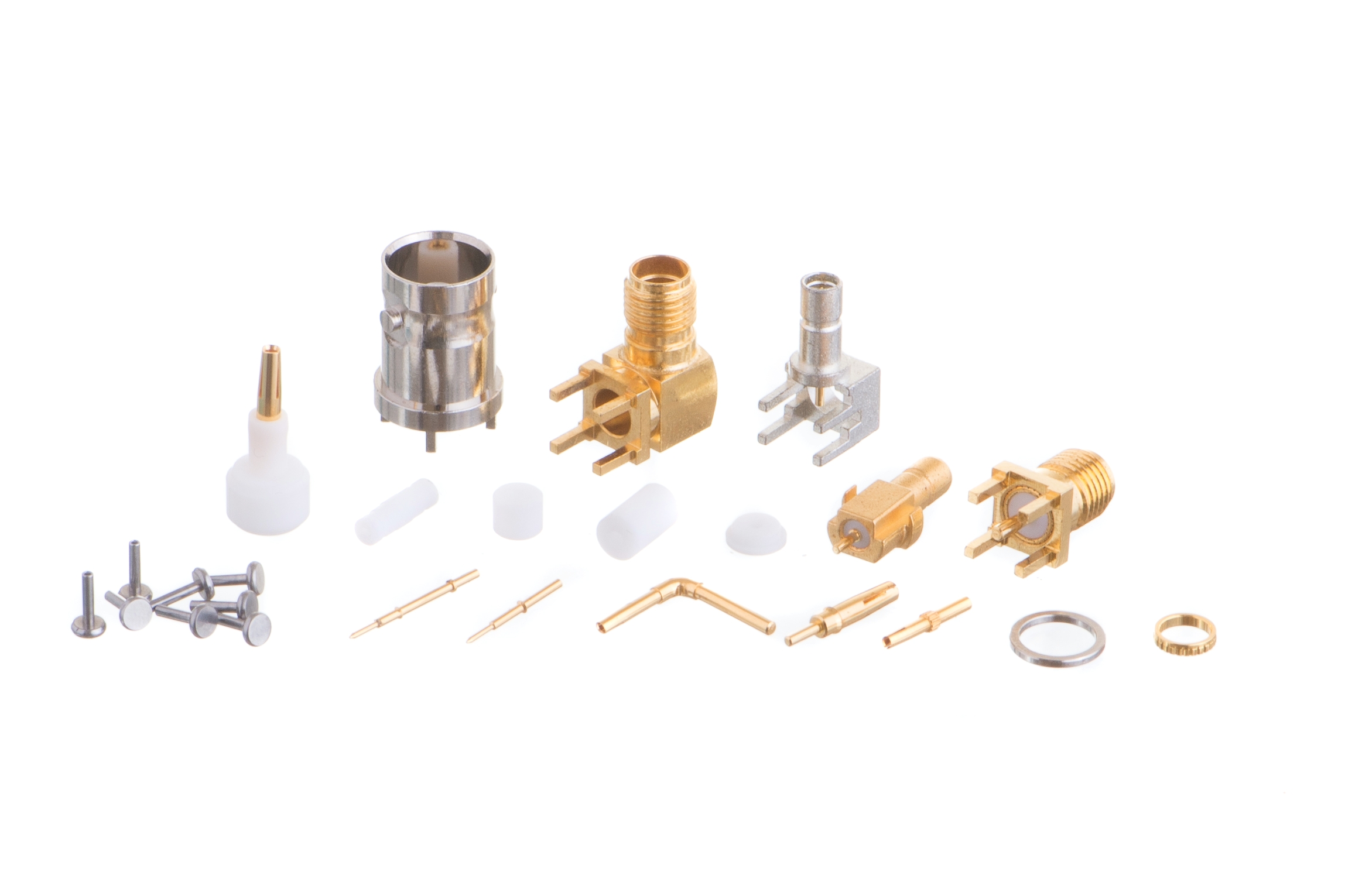By Franky Nguyen, AVF Decolletage
Introduction
When signal frequencies climb into the gigahertz range, every microscopic detail in a connector’s geometry matters.
In high-frequency transmission systems — from 5G networks to radar guidance modules — connector sockets aren’t just mechanical interfaces. They’re electromagnetic precision components engineered to control resistance, impedance, and contact uniformity.
At AVF Decolletage, we approach socket manufacturing as a science. Using Swiss CNC micro-machining and precision metrology, we produce connector sockets that maintain signal integrity, impedance balance, and mechanical reliability across millions of cycles.
Beyond Contact: The Science Behind Socket Geometry
In high-frequency applications, socket design must balance mechanical retention, electrical performance, and thermal stability.
Every micron in socket geometry influences signal quality:
-
Contact spring angle affects insertion force and impedance.
-
Socket wall thickness controls capacitance.
-
Surface roughness (Ra 8–16 µin) determines micro-contact efficiency.
-
Plating microstructure impacts resistance and corrosion behavior.
This engineering precision is why Swiss CNC machining remains unmatched for micro-connectors used in GHz-frequency environments.
Explore AVF Decolletage services
Optimizing RF Performance
At gigahertz speeds, electrons behave differently — skin effects, inductive reactance, and dielectric coupling can distort signals.
AVF Decolletage addresses this through:
1️⃣ Consistent Inner Diameter Control
Each socket bore is held within ±0.005 mm, ensuring stable impedance (typically 50Ω or 75Ω).
2️⃣ Symmetrical Conductor Paths
Swiss multi-axis CNC machining ensures concentricity between socket walls and contact areas, minimizing phase shift.
3️⃣ Material Conductivity Management
Brass alloys (C17300, C19160) are selected for high conductivity and mechanical strength, while gold plating (0.5–1.0 µm) ensures uniform signal paths.
4️⃣ Thermal Stability Simulation
Our engineers simulate expansion and compression effects at high frequencies to prevent mismatch during temperature fluctuations.

Signal Reliability in Harsh Environments
For high-speed connectors used in aerospace, defense, and automotive radar, environmental stress adds another challenge.
-
Temperature swings can alter contact force and dielectric behavior.
-
Vibration and shock can loosen spring tension.
-
Humidity and corrosion degrade conductivity over time.
AVF Decolletage mitigates these with:
-
Spring-tempered brass and beryllium copper for mechanical resilience.
-
Nickel underplating beneath gold to enhance adhesion.
-
Microscopic inspection under Keyence systems for contact integrity validation.
These processes ensure every socket remains electrically stable and mechanically secure, even under dynamic loads.
Learn about our quality system
Real-World Applications of High-Frequency Sockets
5G & Data Infrastructure
Used in base station amplifiers, RF modules, and optical backplanes — where low reflection and low VSWR (<1.1) are critical.
✈️ Aerospace Avionics
Ensures uninterrupted communication and signal accuracy for sensors, guidance, and control systems.
Medical Imaging & Diagnostics
Provides high-fidelity connections in MRI coils, CT scanners, and portable monitoring devices.
Automotive Radar Systems
Handles GHz-level radar signal processing while withstanding temperature and vibration extremes.
The AVF Decolletage Difference
At AVF Decolletage, every socket we produce undergoes:
-
Full statistical process control (SPC) for bore diameter and wall concentricity.
-
CMM and Keyence 3D measurement for geometry validation.
-
XRF plating verification for gold and nickel thickness accuracy.
-
Cyclic testing simulating 10,000+ insertion/removal operations.
We combine Swiss mechanical precision with electrical performance testing, ensuring our sockets are not just dimensionally accurate but also signal-stable in GHz applications.
Conclusion
High-frequency connector sockets are where precision engineering meets physics.
They must balance mechanical design, electrical conductivity, and long-term stability — all within a few microns of variation.
By combining Swiss CNC technology, ISO 9001:2015-certified quality systems, and RF performance validation, AVF Decolletage delivers connector sockets that keep critical systems connected — from aircraft to telecom networks.
Precision, reliability, and innovation — that’s the AVF Decolletage standard.
Frequently Asked Questions (FAQ)
Q1: What makes high-frequency connector sockets unique?
They must maintain controlled impedance, low resistance, and stable contact pressure at GHz frequencies.
Q2: How does AVF Decolletage ensure signal consistency?
Through precision machining, gold/nickel plating control, and impedance simulation.
Q3: Can sockets be customized for RF performance?
Yes — we provide design and material customization for impedance, insertion force, and cycle durability.
Q4: Which industries require high-frequency sockets?
Telecom, aerospace, medical imaging, and automotive radar systems.
Q5: What tolerance levels are achievable?
We maintain ±0.005 mm on critical features using Swiss CNC multi-axis machining.


